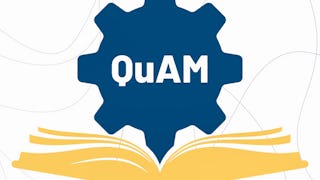Filter by
SubjectRequired
LanguageRequired
The language used throughout the course, in both instruction and assessments.
Learning ProductRequired
LevelRequired
DurationRequired
SkillsRequired
SubtitlesRequired
EducatorRequired
Explore the UML Diagram Course Catalog
 Status: Free Trial
Status: Free TrialUniversity of Minnesota
Skills you'll gain: Business Systems Analysis, Systems Analysis, Requirements Analysis, Business Requirements, Process Flow Diagrams, User Requirements Documents, Data Modeling, Requirements Management, Business Process Modeling, Dataflow
 Status: Free Trial
Status: Free TrialSkills you'll gain: Electrical Substation, Electrical Systems, Electrical Power, Control Systems, Electric Power Systems, Low Voltage, High Voltage, Electrical Equipment, Electrical Safety, Three-Phase, HVAC, Basic Electrical Systems, Wiring Diagram, Mechanical Design, Schematic Diagrams, Construction, Civil Engineering, Control Panels, Programmable Logic Controllers, Technical Standard
 Status: Free Trial
Status: Free TrialAlberta Machine Intelligence Institute
Skills you'll gain: Data Ethics, Applied Machine Learning, Data Processing, Machine Learning, Machine Learning Algorithms, Product Lifecycle Management, Supervised Learning, Data Modeling, Business Requirements, Business Analysis, Unsupervised Learning, Artificial Intelligence, Performance Metric
 Status: Free Trial
Status: Free TrialGoogle Cloud
Skills you'll gain: Google Cloud Platform, Data Pipelines, Dataflow, Cloud Storage, Data Warehousing, Unstructured Data, Real Time Data, Data Lakes, Cloud Engineering, Data Infrastructure, Big Data, Cloud Infrastructure, MLOps (Machine Learning Operations), Dashboard, Data Processing, Extract, Transform, Load, Data Analysis, Data Architecture, Database Architecture and Administration, Data Modeling
 Status: Free Trial
Status: Free TrialJohns Hopkins University
Skills you'll gain: Calculus, Applied Mathematics, Data Modeling, Estimation, Graphing, Mathematical Modeling, Numerical Analysis, Algebra, Trigonometry, Cost Estimation, Linear Algebra, Operations Research, Data Analysis, Advanced Mathematics, Mathematical Software, Analysis, Derivatives, Mathematical Theory & Analysis, Geometry, Trend Analysis

Northeastern University
Skills you'll gain: Software Development Life Cycle, Agile Software Development, Agile Methodology, Requirements Analysis, Agile Project Management, Software Development Methodologies, Application Lifecycle Management, Interpersonal Communications, Scrum (Software Development), Sprint Retrospectives, User Story, Waterfall Methodology, Sprint Planning, Quality Management, Continuous Improvement Process
 Status: Free Trial
Status: Free TrialSplunk Inc.
Skills you'll gain: Splunk, Correlation Analysis, Data Transformation, Data Manipulation, Data Visualization Software, Data Wrangling, Performance Tuning, Statistical Methods, Dashboard, Data Analysis Expressions (DAX), Statistical Analysis, Data Processing, Security Information and Event Management (SIEM), Data Analysis, Data Synthesis, Data Modeling, Ad Hoc Reporting, Time Series Analysis and Forecasting, Exploratory Data Analysis, Transaction Processing
 Status: Free Trial
Status: Free TrialUniversity of Minnesota
Skills you'll gain: Time Series Analysis and Forecasting, Simulations, Operations Research, Probability Distribution, Mathematical Modeling, Supply Chain, Probability, Predictive Modeling, Business Modeling, Business Analytics, Analytics, Regression Analysis, Microsoft Excel, Forecasting, Data Modeling, Process Optimization, Data-Driven Decision-Making, Statistics, Business Mathematics, Manufacturing Operations

Sapienza University of Rome
Skills you'll gain: Ancient History, 3D Modeling, Scientific Methods, Anthropology, Investigation, Data Modeling, Cultural Diversity, Art History, Research, Timelines, Data Management, Data Collection
 Status: Free Trial
Status: Free TrialUniversity of Colorado System
Skills you'll gain: Software Design Documents, User Requirements Documents, Functional Requirement, Software Documentation, Unified Modeling Language, Functional Specification, Requirements Analysis, System Requirements, Systems Design, Technical Documentation, Data Modeling, Software Visualization, Systems Analysis, Dataflow
 Status: Free Trial
Status: Free TrialUniversity of Michigan
Skills you'll gain: Qualitative Research, Usability Testing, User Centered Design, Research Methodologies, Needs Assessment, Interviewing Skills, Research, Data Collection
 Status: Free Trial
Status: Free TrialSkills you'll gain: Data Warehousing, Extract, Transform, Load, Star Schema, IBM DB2, Data Modeling, Snowflake Schema, PostgreSQL, Database Design, Data Architecture, Data Mart, Database Systems, Data Lakes, Data Validation, Data Integration, SQL, Data Cleansing, Query Languages, Data Quality
UML Diagram learners also search
In summary, here are 10 of our most popular uml diagram courses
- Analysis for Business Systems: University of Minnesota
- A Practitioner's Approach to Power Distribution & Automation: L&T EduTech
- Introduction to Applied Machine Learning: Alberta Machine Intelligence Institute
- Preparing for Google Cloud Certification: Cloud Data Engineer Professional Certificate 日本語版: Google Cloud
- Differential Calculus through Data and Modeling: Johns Hopkins University
- Agile Dev Practices: SDLC & Project Management: Northeastern University
- Splunk Search Expert: Splunk Inc.
- Analytics for Decision Making: University of Minnesota
- Recovering the Humankind's Past and Saving the Universal Heritage: Sapienza University of Rome
- SRS Documents: Requirements and Diagrammatic Notations: University of Colorado System










